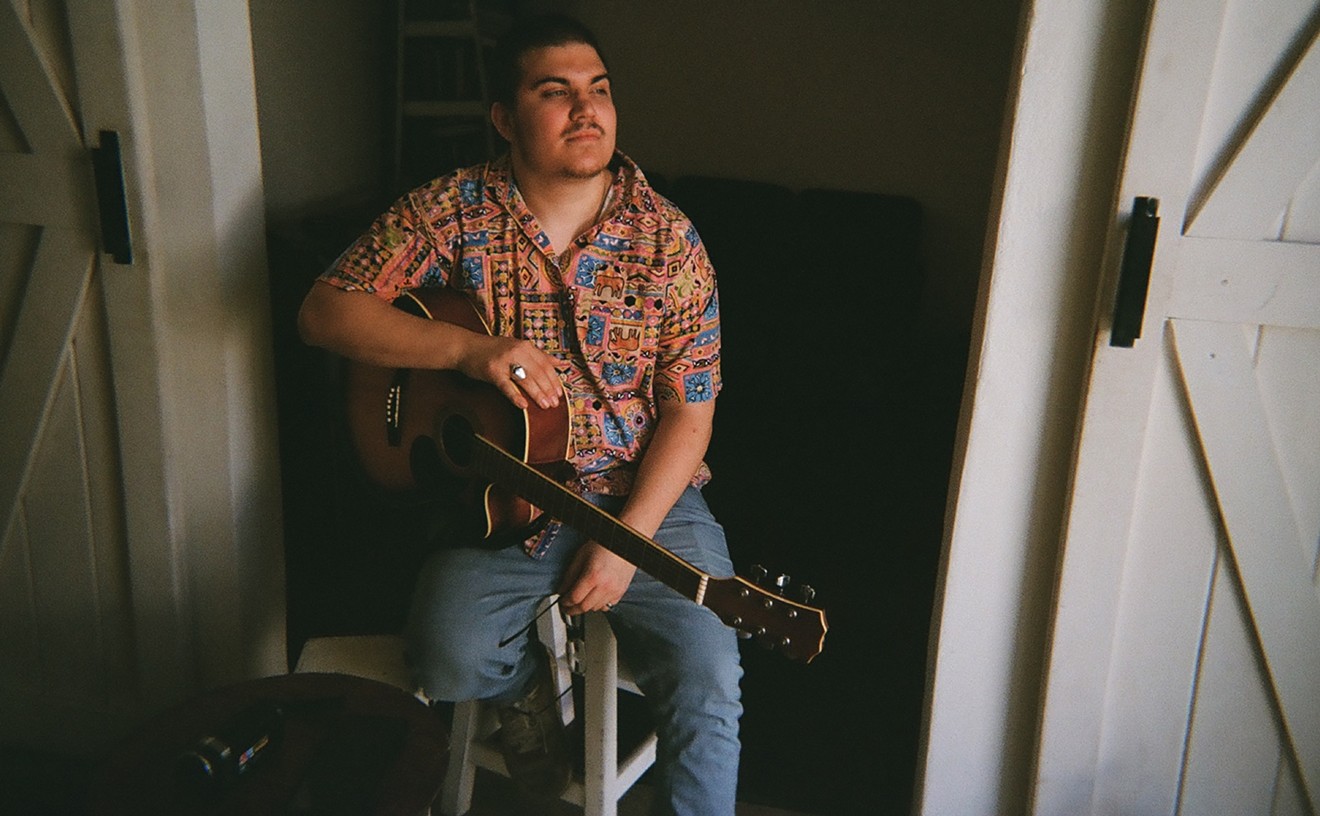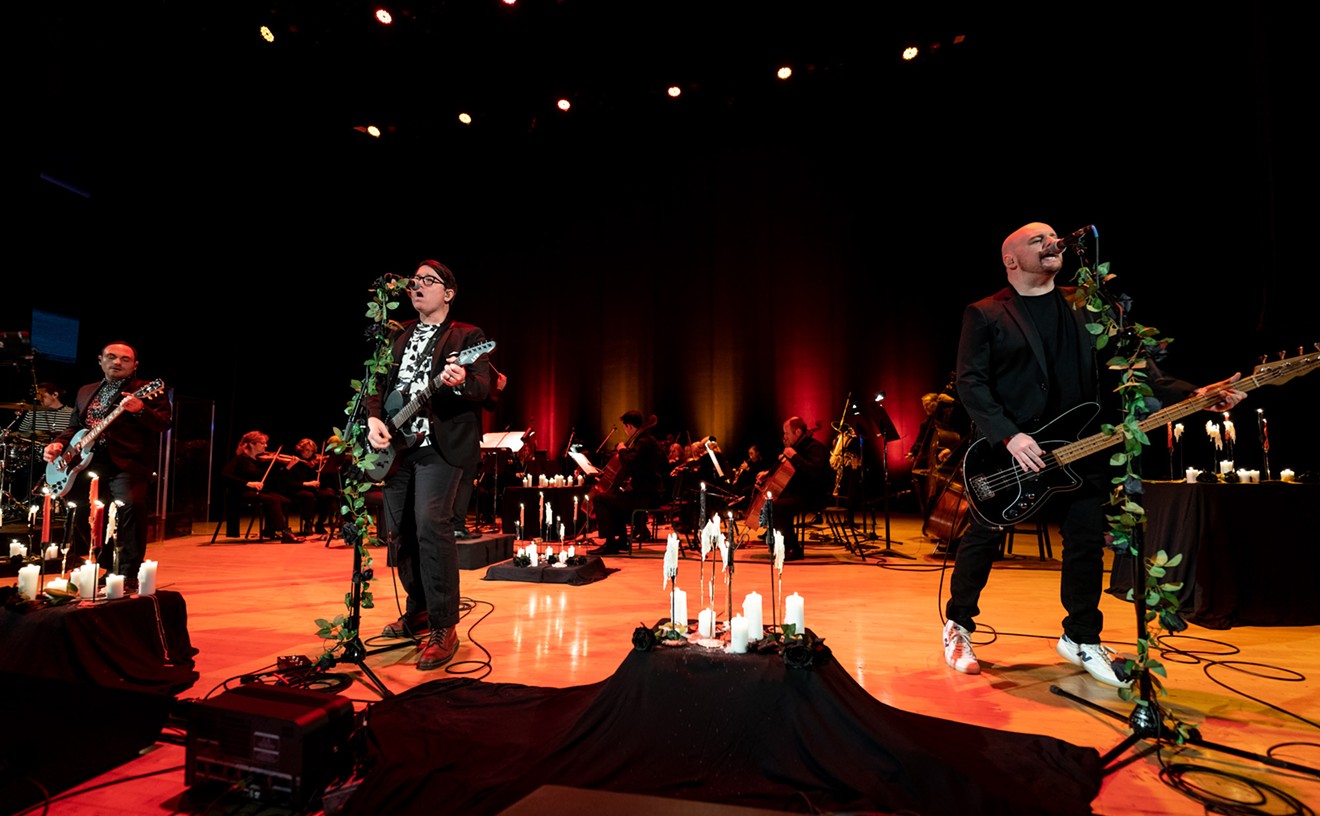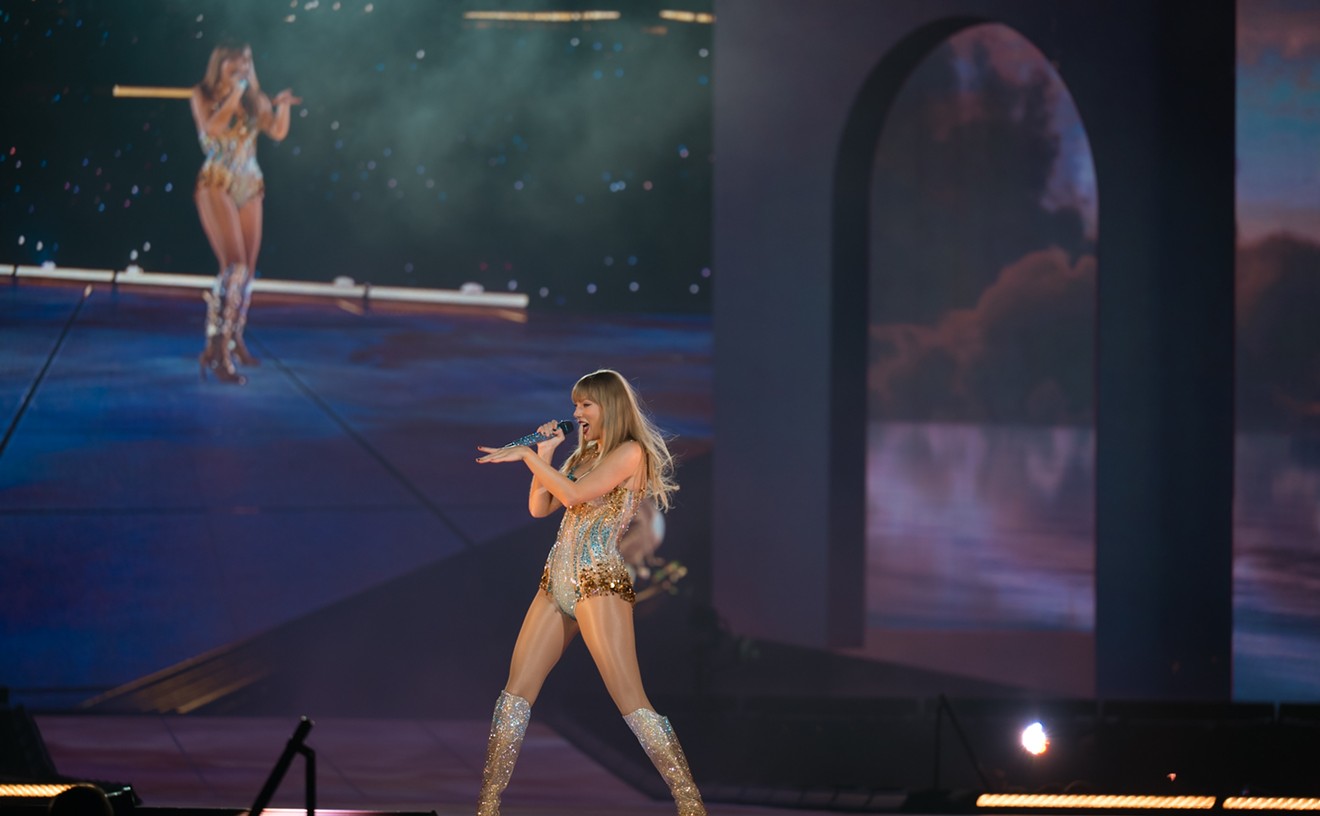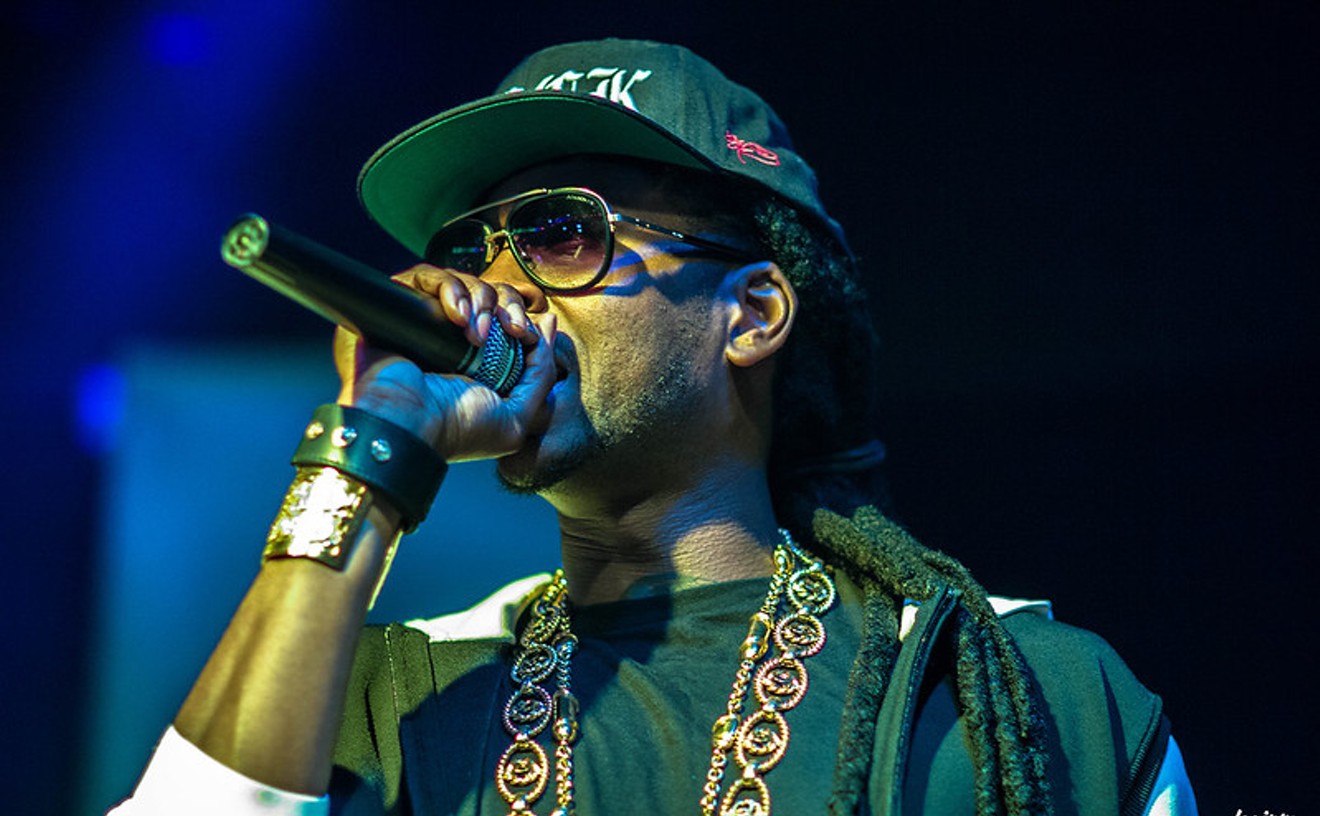It was May of 1984, and young punk Frank Campagna was racing around Dallas in his '75 burgundy Chrysler Cordova – the model with the real Corinthian leather. His mission: to find some green tea for Stevie Nicks.
"It was before there was Whole Foods or any of these organic places," he explains. "Hell, I'd never even heard of green tea before that. But that's what she wanted, and it was the only thing she drank."
Campagna, now a well-known local artist, admittedly only took a job at Starck Club in order to get in opening night. He skipped the line and $125 cover, and worked as a bar back. Nicks, one of Starck Club's investors, was in town along with performance artist and supermodel Grace Jones to christen the new venue's stage, launching what would become one of the most legendary dance clubs in Dallas history, at a time when the city was thriving, economically and culturally.
Starck Club was the brainchild of Dallas trust funder Blake Woodall. He reached out to up-and-coming Parisian designer Philippe Starck, who flew in from Paris and met him at Trader Vic's. The two shared their visions, and the blueprint for the Starck Club was conceived. The idea was to turn a run down warehouse space on McKinney, located in the middle of the rail yards, into the sleekest, most sophisticated club in town.
Starck Club opened on May 12, 1984. MDMA (commonly referred to as Ecstasy) was legal, and curious parties from all over the country flocked to the Bible Belt to partake in the debauchery. The music was trendsetting, the fashion was outrageous, and there was an air of anything-goes, penalty-free sexuality. It was a playground for the Me Generation.
A laundry list of stars made appearances: Madonna, Rob Lowe, David Byrne, Prince, Allen Ginsberg, Charlie Sheen, even Princess Stephanie of Monaco. On August 21, 1984, the club hosted the "Starcktari" party during the Republican National Convention, which featured a live baby elephant and attracted notable guests like a George W. Bush and Maureen Reagan.
"When I first walked into this place, what I could gather was that their goal was really bringing a downtown Manhattan nightclub warehouse thing to Dallas," says Joseph Alexandre, director of Warriors of the Discotheque, one of two Starck Club documentaries that has been in the works since 2009.
Now, more than two decades after the Starck Club closed in the summer of 1989, there is a race to preserve its memory. Alexandre's nineteen-minute short film premiered at the USA Film Festival in 2009, and the feature-length version was released in 2011. Meanwhile, two former Starck-goers, award-winning documentary filmmaker Michael Cain and local DJ Wade Hampton, had ideas of their own.
"I was shopping The Starck Project around for my own version of a feature narrative screenplay," says Hampton, now music director and co-producer of the documentary, "and I got eight days into Sundance and had four to five producers looking into it, and heard there's a guy down the street who's pitching basically the same film."
A producer hooked Hampton and Cain up, and they spent 45 minutes on the phone. "I figured after that phone call that we were either going to work together or have an interesting few years on our hands," Hampton chuckles. The Starck Project partnered with The Woodall Group, led by club founder Blake Woodall, in May of 2009, on the club's 25th anniversary.
During this year's Dallas International Film Festival last week, a private rough cut of The Starck Project was screened for a packed theater. Cain led viewers through scenes using Final Cut Pro and a Mac; the crowd, made up of festival-goers and "Starck-ers," cheered and laughed as friends and familiar faces flashed up on the screen.
After the screening, clusters of people lingered near the front of the theater and lined the steps, swapping remember-when stories. Stacy Fesler, a Starck Club regular, appeared in the August issue of Life magazine in a story titled "That New Drug Craze: Ecstasy."
"The guys from the magazine asked if I had taken Ecstasy," she explains. "And of course I had. It was my friend's birthday, and it was still legal."
The reporters from Life had Fesler sign a waiver, then handed her a white t-shirt with bold, black print across the front that read, "I'm In XTC."
"They also handed out two tank tops that read the same thing to two other girls who said they were strippers," she adds. "The journalists left the club with those girls, and I ended up in the magazine."
On Friday, April 20, Zouk - the space that was formerly the Starck Club - hosted a wrap-up party for Cain and Hampton's doc. While most young Zouk patrons danced near the DJ booth, a handful of Starck Club regulars conjured memories of the past by dancing on the black terrazzo steps. Lisa Wichman and Becky Spradling danced on the stairs every night.
"This music's OK," Spradling shouts over Rihanna's "We Found Love." "But the music at Starck was better."
The music was integral to the club's success. Starck's resident DJ Rick Squillante broke hits with his play-what-you-love attitude, and later went on to become a producer. DJ Mike DuPriest (aka Go-Go Mike) introduced Dallas to house music, a genre that originated in Chicago in the early '80s. Memorable DJs aside, the Starck hosted acts from New Order to Book of Love and Red Hot Chili Peppers.
"We were more in it for the chaos," a reflective Hampton muses. "We loved the music so much that we literally wouldn't turn it off for the other 19 hours of the day that we weren't at the club. We were cranking it somewhere and trying to figure out a way to get more people to do that with us."
The music isn't the only thing that's changed over the years. The décor's been updated, after several clubs took over the space. Club-goers used to pay for privacy, and now pay to be put on display. The areas Philippe Starck sectioned off with white curtains have been replaced with VIP sections, showcased on elevated mini stages behind glass, displaying patrons who are presumably proud of the section's price tag.
There are no gatekeepers holding the maroon rope, allowing only the most fashionable and outrageous in. This became apparent as a girl sporting a V-neck t-shirt, flared blue jeans and flip-flops trotted by. The fanciful allure of the '80s is gone, leaving a standard 21st century nightclub in its place.
A few framed black and white Starck Club photos line the hall leading to the bathrooms on the second floor. Sean Wrather gazes at one.
"That's me," he exclaims, pointing to the back of a doorman in a photo taken outside of the club, as hordes of people wait to be hand-selected and enter through giant vaulted doors. "I was a doorman at The Starck Club. Blake Woodall saw me dancing one night and then asked if I wanted a job."
"See that there," he adds, pointing further down the hall to a space by the bathroom lobby, where a girl in a black mini-dress stood texting on her phone across from a blinking blue ATM machine. "That's where Vaal used to hang out. She sold cigarettes and Ecstasy."
A purple velvet fainting couch with rhinestone embellishments propped the women's bathroom door open. Tiny, enclosed stalls lined the mocha-colored bathroom, the black doors nearly brushing the toilets as they opened and closed. Blow Pops, cigarettes, Q-tips, gum, hairspray, safety pins and any other vanities required for the night lined the counter as a woman on a stool pumped soap onto girl's hands and handed her a paper towel. It was far from the notoriously spacious, unisex bathrooms lined with glass panels and televisions, which were so famously used as a hangout spot.
What was it about Starck Club that was, and still is, so special to so many people? Was it the music, the fashion, the freedom and experimentation? Were the '80s at Starck Club a cosmic time where personal inhibitions were shattered, and people could live freely? Or was it merely an illusion, masked by piles of money and drugs?
The memories of Starck are still very much alive to those who lived it. This is especially apparent considering there are two separate documentaries in the works, and talk of feature films and television specials from both creative parties. Starck Club created and influenced pop culture, it didn't piggyback it, and the need to preserve the memory is clear. Whether or not another club will ever influence Dallas the same way is not.










